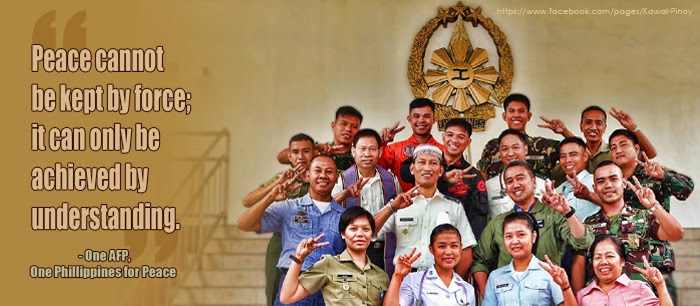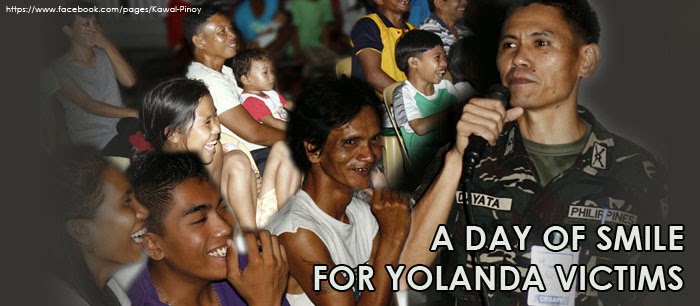 | |
| (Photo Produced by Kawal Pinoy from internet sources)
By Germelina Lacorte
Published in Inquirer Mindanao
TULUNAN, North Cotabato—We heard the sound of gunfire, and soon enough, people were shouting, telling us to flee because fighting has erupted,” Zuleika Sandigan, 75, said, recalling one night in August 2008 when she and her family had to flee their house in Barangay Galidan in Tulunan, North Cotabato province.
The village came under siege following the collapse of talks between the government and the Moro Islamic Liberation Front (MILF) over the aborted signing of the controversial memorandum agreement on ancestral domain (MOA-AD).
“We left everything,” she said. “The children had no clothes. We left our kettles, we left the carabaos and all the animals.”
She recalled sleeping on a cogon field with her children. She pointed at a lot now covered with African palms, where the cogon field used to be. There was nothing to eat that night and, in the morning, they had to move out again as the sound of gunshots and bomb explosions drew near.
“We fled just in time,” she said. The area where they slept, she said, was hit by mortar fire, which formed a crater the size of two cars.
Before they reached the town of Paglas where they took refuge, they had to cross a river and walk for hours in a downpour.
The Tulunan villages of Galidan and Damawato were among 30 that became battlefields in clashes that swept North Cotabato and other parts of Central Mindanao following the aborted signing of MOA-AD in 2008. When the people returned to their villages, everything they had was either gone or damaged.
When the Mindanao Development Authority (Minda) started what it called the Early Recovery and Rehabilitation for Central Mindanao (ERRCM) project in June 2010, the villages of Galidan and Damawato were included on the list of those that needed help.
But barely had the project started when Minda realized that the rebuilding effort required not only new houses for the people, but also repairing relationships shattered by the war.
People in the villages of Galidan and Damawato were not talking to each other, recalled Damawato Barangay Chair Gilberto Espelita. Three decades of boundary conflicts and the armed conflict between government and MILF made the people in the two villages suspicious of each other.
“It used to be very difficult for us,” Espelita said. “People in Galidan used to loathe coming here to Damawato and we, in Damawato, used to loathe going to Galidan, unless there were many of us,” he said.
“Our father used to warn us, ‘Don’t go there when you’re too few, you might not come back alive,’” he said.
Galidan Barangay Chair Limba Ampatuan said that during the 2008 fighting, almost everyone in Galidan fled to Paglas town, where they took sanctuary in predominantly Moro communities. People in Damawato fled to the town of Tulunan.
Ampatuan said the problem started with the Galidan community’s struggle to claim their land. He recounted how, in the 1970s, the paramilitary group Ilaga forced Moro communities in Galidan to evacuate.
When they came back a decade later to resettle in Galidan, they discovered that the titles of their lands were already owned by Christian settlers. Galidan became a separate village from Damawato in 1982, which also started the boundary dispute.
Espelita recalled how he and Ampatuan, as heads of their villages, would shake hands or joke with each other in public during town-level meetings or in Liga ng mga Barangay conferences. But they would avoid talking about their villages’ boundary dispute.
“It (the boundary dispute) used to be a problem that kept coming back and was never solved,” Espelita said.
“We have become tired of talking to each other,” he said, recalling peace workshops initiated by Oxfam where they were first made to thresh out their problems.
The ERRCM brought the two communities together. Funded by the European Union (EU) and the United Nations Development Program (UNDP) and implemented by Minda, the project sought to facilitate the return and resettlement of people displaced by armed conflicts in the Autonomous Region in Muslim Mindanao after the 2008 hostilities.
The displacements were heaviest in the provinces of Maguindanao, North Cotabato, Lanao del Sur and Lanao del Norte. The project, which was supposed to run from June 2010 to December 2011, sought to restore normalcy in the lives of internally displaced people by providing basic needs like shelter, water, sanitation, health and other facilities.
“But this time, people in the barangays were asked: What seems to be the problem? Why are people from Galidan and Damawato not talking to each other?” Ampatuan said. “We started working out the solutions in a series of workshops called culture of peace.”
After threshing out their problems, the two villages identified a 100-hectare area as the source of the dispute. For days, they negotiated and eventually agreed to divide the area.
Galidan village Councilor Jimmy Ambod recalled how the Oxfam workshops once brought the two communities to talk to each other. But the problem kept coming back. This time, with the UNDP and EU-assisted Minda project, they finally came up with a solution.
After that, Galidan Barangay Chair Ampatuan is now seen frequently together with the barangay chair of Damawato.
Ampatuan said he was hopeful that the peace agreement being worked out between the MILF and the government would correct the injustice done to the Moro people in the last four decades. He was referring to the land outside of the boundary dispute in Galidan, earlier taken away from Moros during the time of the Ilaga and registered in the name of the settlers.
He said the two villages were hopeful.
On the patch of cogon, where fleeing villagers slept at the height of the fighting, sprung an African palm plantation. A school building rose from the ashes of the houses that, Sandigan said, were burned by soldiers at the height of war.
Sitting near the doorway of her new shelter, a few paces from her old house, Sandigan said she hoped the government-MILF agreement would bring about lasting peace in Mindanao. She spent four months in the evacuation center after the 2008 skirmishes where the year-old child, who was with her, died. She said nothing could replace what she lost in the war and she had grown too old to survive another.
“I want peace to last,” she said. “If war breaks out again, it might already kill me,” she added.
|
AFP: Always Forging for Peace!
Saturday, August 2, 2014
War defines life for displaced folk
Subscribe to:
Post Comments (Atom)
Ipaglaban ang ating Kalayaan!
The West Philippine Sea is Ours!Support our campaign..#NoToChinaInvasionEnvironmentDestructionxinchai |...
Posted by Kawal Pinoy on Monday, May 11, 2015


Recent Post
Labels
All Out Offensive
(8)
Istoryang Kawal Pinoy
(46)
Kawal Pinoy Heroes
(38)
Kawal Pinoy News
(369)
Kawal Pinoy Photos
(152)
Kawal Pinoy Product Photos
(10)
Published Military Articles
(350)






No comments:
Post a Comment